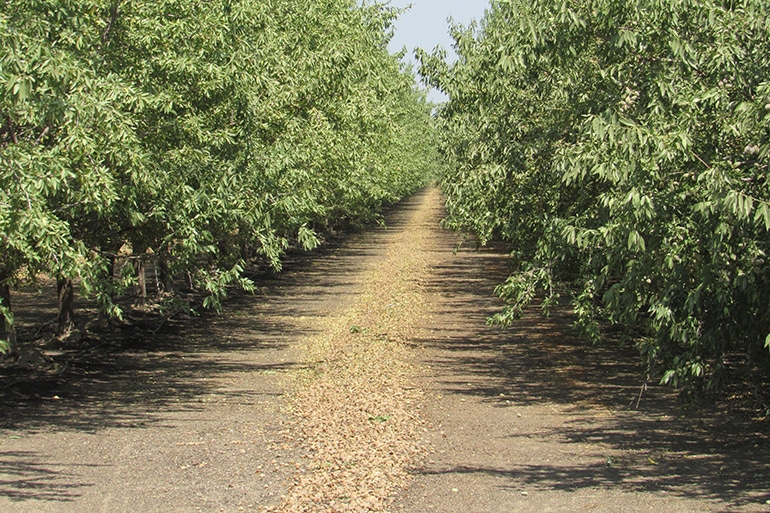
Researchers have been seeking solutions to an untreatable airborne fungus that has been killing almond trees in California’s Central Valley for several years by causing wood to rot from the inside.
The European fungus, Ganoderma adspersum, usually weakens the trunks of trees at ground level, say University of California researchers. Three kinds of Ganoderma fungus infections have been identified in almond orchards recently, with 94% of the cases being of the adspersum variety, according to the UC.
Researchers say the fungus showed up in the valley about five years ago and has been killing young and old trees, and spraying for the fungus has been ineffective.
“We are seeing those trees collapsing at 11, 12, 15 years old,” UC Cooperative Extension orchard systems advisor Mohammad Yaghmour recently told the Bakersfield Californian.
The infections have forced some growers to remove orchards at less than half their typical 20- to 25-year life span. Yaghmour told the newspaper he believes that researchers will eventually identify a rootstock that is resistant to the fungus.
UC researchers say they’re also continuing to look for ways to detect Ganoderma infections before growers have to remove entire orchards, but the short-term outlook isn’t promising.
Left unchecked, the fungal infections could cost San Joaquin Valley almond farmers hundreds of thousands of dollars in lost production, the UC explains.
Mae Culumber, a UC Cooperative Extension nut crops advisor in Fresno County, has speculated that air quality regulations prohibiting the burning of orchard prunings may have allowed fungi to grow in slash piles in agricultural areas, according to a university blog post.
An aggressive fungus
At the Almond Conference in Sacramento, UC Davis graduate student Bob Johnson told of his firsthand experience with the fungus, noting he confirmed Ganoderma adspersum in at least 68 southern San Joaquin Valley orchards.
Johnson, writing in the March 2017 issue of Growing Produce, explained that most species of wood decay fungi are non-aggressive and opportunistically colonize and decay dead wood.
But while these fungi pose little threat, Ganoderma is anything but benign. Spread from tree to tree by spores in the air, it typically attacks trees that have been wounded by shaking during harvest or as part of winter sanitation, the Almond Board of California cautions in a blog post.
Infected trees often have large conks at their base, often growing near a V-shaped cleft, according to the Almond Board. The conks can produce up to 40 million spores a day, increasing the odds of widespread infections.
Symptoms of an orchard that has been compromised by the disease include a less-dense canopy, a later-than-normal bloom, shallow root systems and flat strips on their trunk, the Almond Board explains.
The UC’s Johnson describes a typical Ganoderma outbreak to occur as follows:
--During harvest, shaking may create wounds below the soil line and on the trunk’s base.
--Sweeping spreads spores from conks through the air within and between orchards.
--Post-harvest irrigation and rain then allow spores to filter into the soil.
--During dormancy, winter sanitation shaking reinjures trees, potentially making them even more susceptible to infection.
The board advises growers to avoid machine-shaking their trees any sooner than necessary after a new tree has been planted.
For more news on tree nuts as reported by growers and farm advisors, subscribe to the Tree Nut Farm Press e-newsletter.
About the Author(s)
You May Also Like






